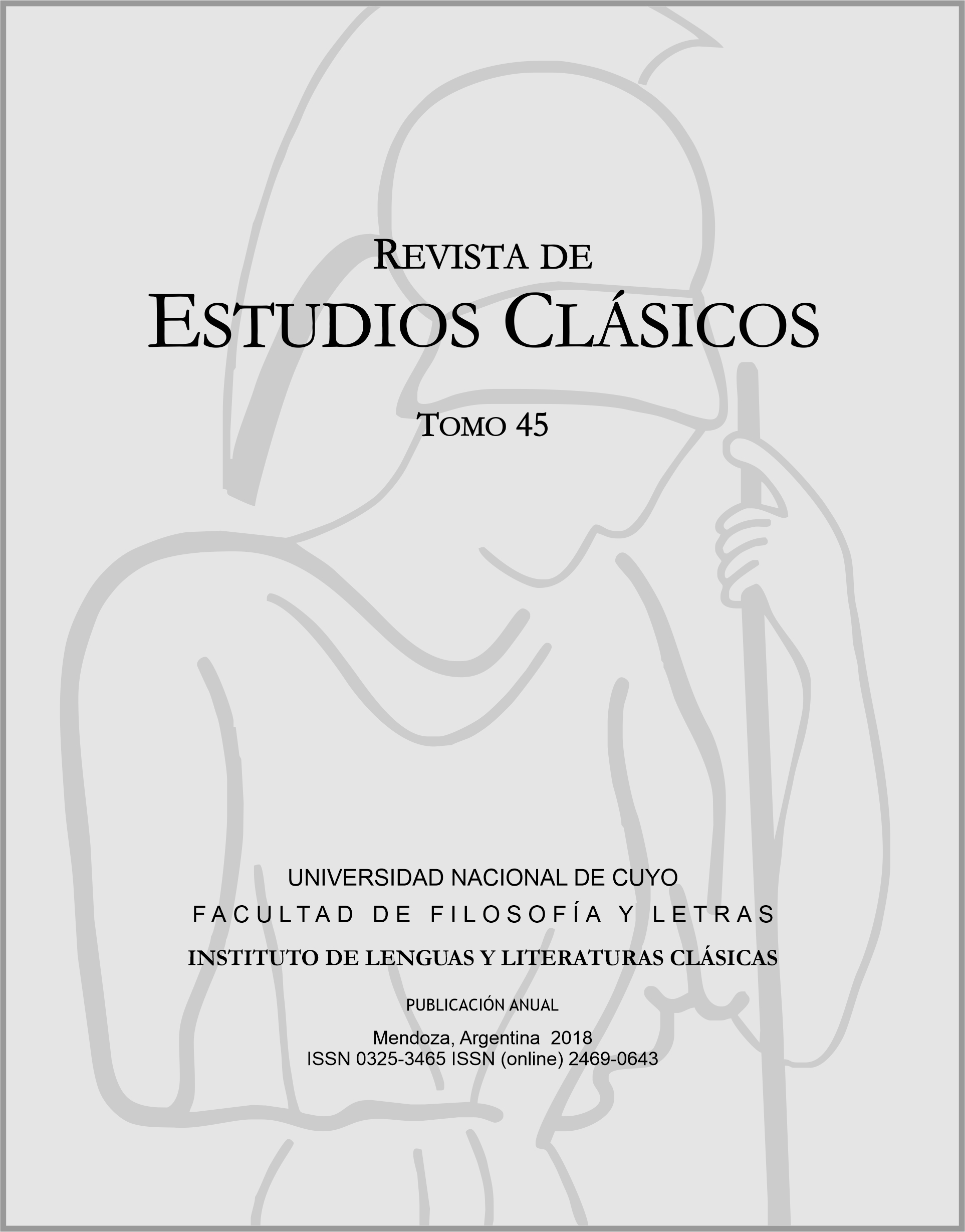La configuración del ethos en los parágrafos V a XIX del Libro I de El Asno de Oro de Apuleyo
Keywords:
retórica, ethos, pathos, novela latina, Apuleyo.Abstract
Abstract
The purpose of this article is the analysis of the ethos of the characters that act as narrators in paragraphs V to XIX of Book I of The Golden Ass. It should be noted that the study of the ethos of the speakers is based on the conception that it is the result of a pre-discursive elaboration, which will result in the construction of ethos in rhetorical discourse, a concept already expressed by Aristotle in his Rhetoric and taken up by the theories of discourse and argumentation from the second half of the 20th century. Therefore, the methodology to be used is worth as much of works of Classical Rhetoric as of the New Rhetoric. In addition, it uses approaches to Linguistics and Narratology. Because Apuleyo's novel is an example of what Bakhtin calls "dialogism and alterity," a second objective is the study of the relationships established in the discourse of the characters to try to establish the meaning sought in the work, and in consequence the incumbency or verisimilitude of these stories in it.
Keywords: rhetoric; ethos; pathos; Latin novel; Apuleius.
Downloads
Published
How to Cite
Issue
Section
License
Aquellos autores/as que tengan publicaciones con esta revista, aceptan los términos siguientes:
- Los autores/as conservarán sus derechos de autor y garantizarán a la revista el derecho de primera publicación de su obra, el cuál estará simultáneamente sujeto a laLicencia Creative Commons Atribución-NoComercial-CompartirIgual 2.5 Argentina (CC BY-NC-SA 2.5 AR). (https://creativecommons.org/licenses/by-nc-sa/2.5/ar/)que permite a terceros compartir la obra siempre que se indique su autor y su primera publicación esta revista.
- Los autores/as podrán adoptar otros acuerdos de licencia no exclusiva de distribución de la versión de la obra publicada (p. ej.: depositarla en un archivo telemático institucional o publicarla en un volumen monográfico) siempre que se indique la publicación inicial en esta revista.
- Se permite y recomienda a los autores/as difundir su obra a través de Internet (p. ej.: en archivos telemáticos institucionales o en su página web) antes y durante el proceso de envío, lo cual puede producir intercambios interesantes y aumentar las citas de la obra publicada. (Véase El efecto del acceso abierto).


































